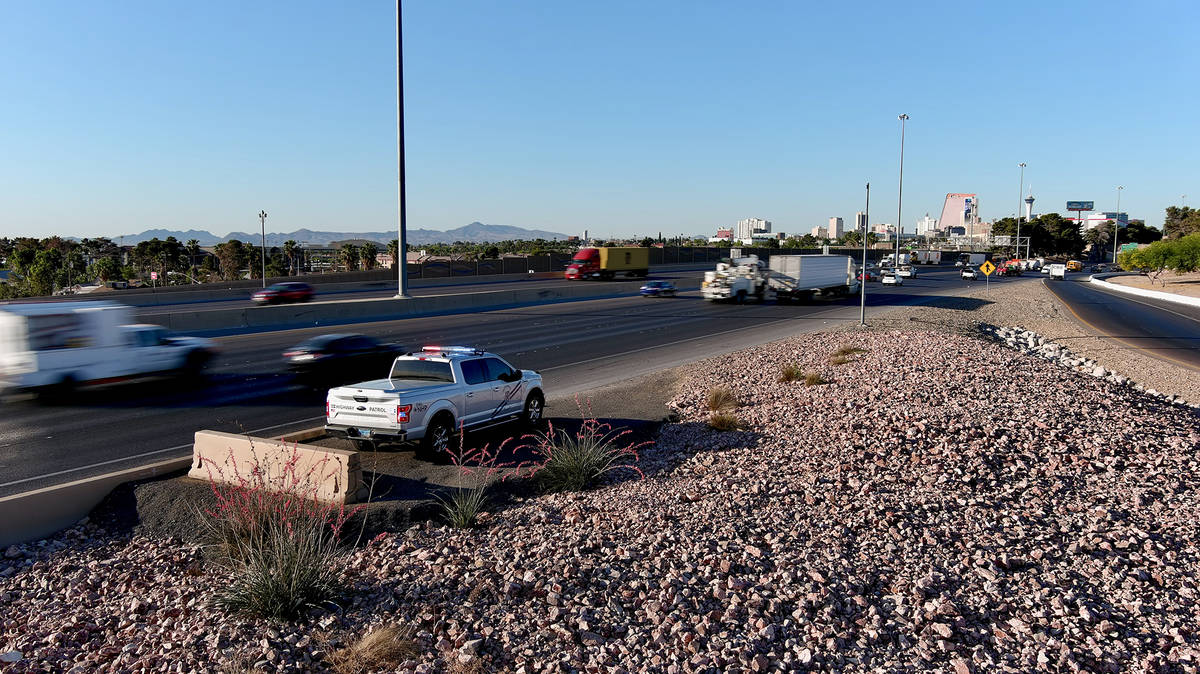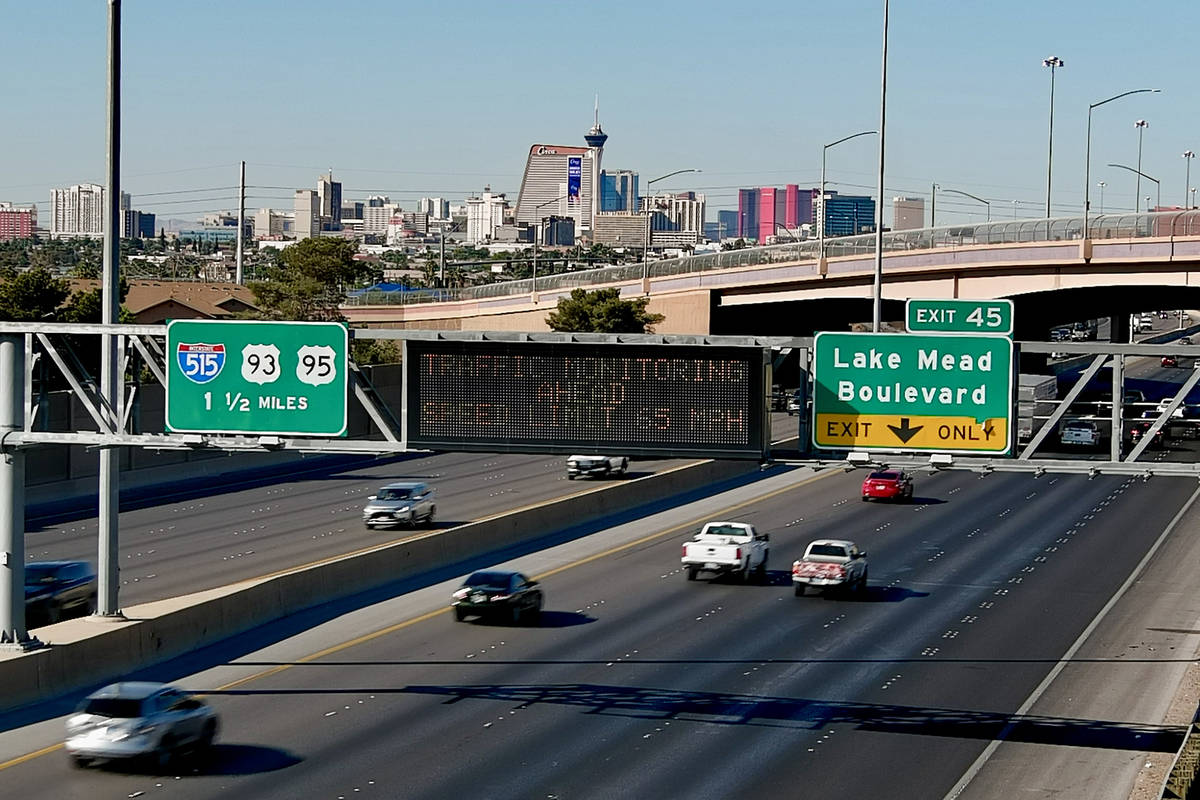NHP using AI technology to reduce speeding, crashes on Las Vegas highways
The use of artificial intelligence to strategically position law enforcement vehicles on Las Vegas’ busiest highways appears to have had some initial success in reducing dangerous driving.
Waycare, an AI traffic management and transit solutions provider, used algorithms to pinpoint areas that have a high risk of wrecks based on existing crash data.
That led Waycare, working with the Nevada Highway Patrol, to focus enforcement efforts on three key corridors: Interstate 15 northbound near Russell Road, I-15 southbound near Lake Mead Boulevard and U.S. Highway 95 southbound near Jones Boulevard.
Armed with the data, NHP positioned troopers at strategic traffic management sites — elevated areas in medians on the highways — to increase driver caution and vigilance.
Additionally, the Regional Transportation Commission regularly activated the dynamic messaging signs that were installed on I-15 and U.S. 95 as part of Project Neon to reinforce speed limits that fluctuate with traffic volume. The signs also provided advance warning of upcoming lane closures and crashes.
As a result, speeding was reduced along the three corridors by 43 percent, while crashes declined 18 percent during the deployment period from October 2019 to December 2020, according to Waycare.
“The combination of emerging technologies together with the collaboration of law enforcement has proven to be successful in enhancing safety, preserving capacity and effectively communicating with Southern Nevada drivers,” said M.J. Maynard, RTC CEO. “The use of AI-based insights helped identify potential target areas, allowing us to increase safety and plan for preventative actions in the future.”
During the study period there were 128 crashes in the three areas when a police presence was not in place. That fell to 83 crashes when a law enforcement vehicle was in place.
The average speed across the corridors dipped 3 percent, going from 62 mph to 60 mph. Data also showed 41 percent of drivers speeding in the corridors when there was no police vehicle in the elevated positions, but that dropped to 24 percent when police were present.
Additionally, NHP troopers found that motorists became aware of the stations where law enforcement would be staged and decreased their speed even when one was not present.
Nevada Highway Patrol Lt. John Arias explained how the idea to add patrol vehicles to the raised portions on the shoulders of freeways came about.
“I suggested the idea to our partners to take the concept of police presence, in addition to the strategy used by Washington, D.C., in 2001 — roving patrols with emergency lights activated to reduce crime and traffic violations — and place stationary units in the areas about a mile prior to high-crash corridors,” Arias said. “I requested NDOT to build us a raised platform next to the roadway that would enhance visibility and position the vehicle facing traffic so the public could clearly see the vehicle and driver was looking at them.”
An estimated $3 million in economic benefit and savings resulted from the drop in crashes and the decreased severity of the ones that did occur. That represented a return on investment of 16 times the program’s $188,970 cost.
“Educating drivers and changing roadway design is not enough to combat the rising number of fatalities on our roads,” said Noam Maital, CEO of Waycare. “AI offers an opportunity to change the rules of the game — we can leverage predictive analytics to proactively prevent crashes.”
The system could work on any road, not just freeways, as a method to increase safety on other areas that are prone to crashes occurring.
“The technology is applicable to all valley roads,” said John Peñuelas Jr., RTC senior director of engineering. “We can use the data to identify corridor segments of concern and potential causes, and work with local agencies and law enforcement to address them through engineering, education and enforcement.”
Contact Mick Akers at makers@reviewjournal.com or 702-387-2920. Follow @mickakers on Twitter. Send questions and comments to roadwarrior@reviewjournal.com.

























